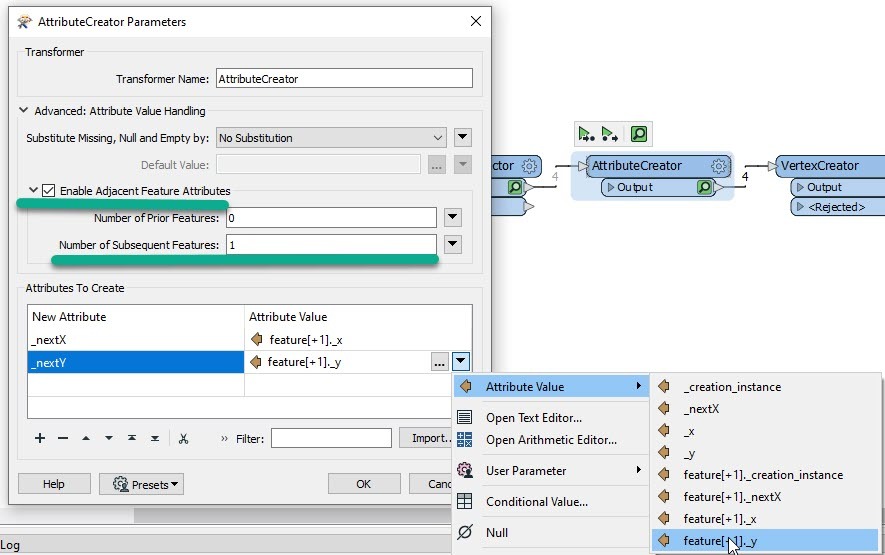I have a csv of locations points tracking a utility vehicle. Each point is denoted by the "POSITION" number, and they are grouped by a "TRIP" attribute. The LineBuilder transformer will either A) Make a single line connected all points or  if I group by Position it will leave as points.
if I group by Position it will leave as points.
I've done this in Python by using a combination iteration, to use a for loop to connect each point to the one in front of it, but I am unsure what transformers I would use in FME. Additionally, I have yet to figure out how to access and output my features using the PythonCaller.
How would I go about connecting each point to the next individually?

 The trick is in the AttributeCreator:
The trick is in the AttributeCreator:  You'll have to add a Sorter if the data isn't ordered correctly by TRIP, and POSITION
You'll have to add a Sorter if the data isn't ordered correctly by TRIP, and POSITION